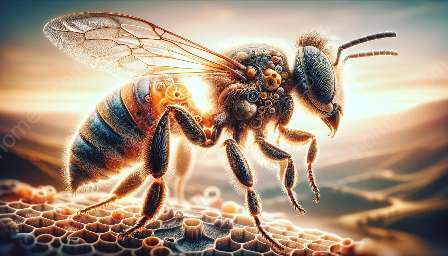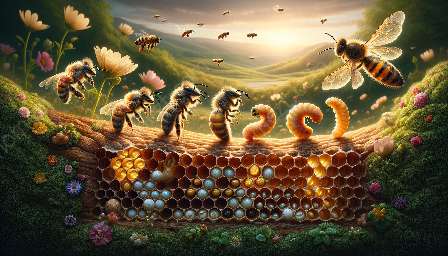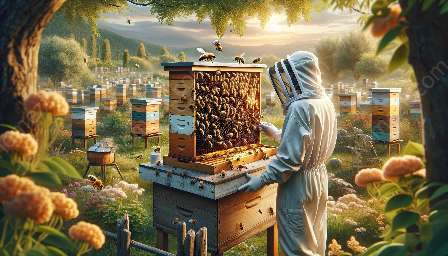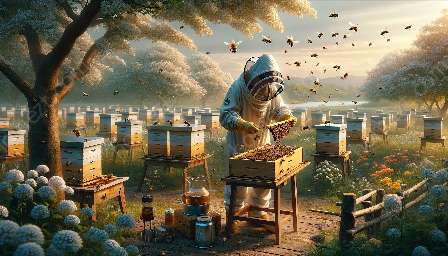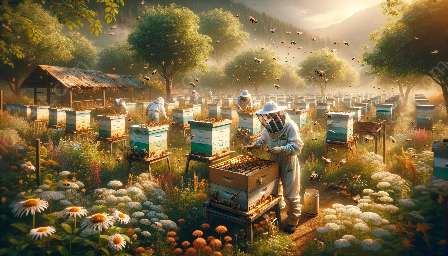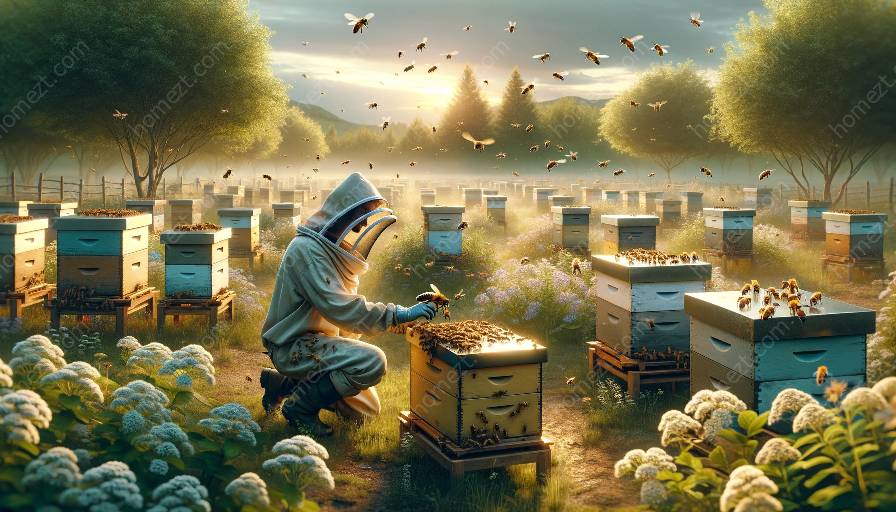Swarm prevention is a crucial aspect of beekeeping to maintain healthy bee populations and ensure the sustainability of colonies. It involves various strategies and practices aimed at managing bee colonies to mitigate the risks of swarming while also considering the impact of pest control measures. Understanding the factors that contribute to swarming and implementing effective preventive techniques are essential for beekeepers. In this topic cluster, we will explore swarm prevention in beekeeping, the role of bees, and the relevance of pest control in maintaining thriving bee colonies.
The Importance of Swarm Prevention
Swarming is a natural behavior of honey bee colonies, where a new queen bee and a portion of the worker bees leave the existing hive to establish a new colony. While swarming is a reproductive process for bees, excessive swarming can have adverse effects on the health and productivity of bee colonies. The loss of bees due to swarming can impact pollination, honey production, and overall colony strength.
Swarm prevention is therefore essential to minimize the negative consequences of swarming, helping beekeepers maintain strong and productive colonies. By implementing proactive strategies, beekeepers can manage their hives effectively and prevent swarming events that may lead to a decline in bee populations.
Factors Contributing to Swarming
Several factors can trigger swarming in bee colonies, including overcrowding, lack of space, queen health, and environmental conditions. Overcrowding within the hive can prompt bees to swarm in search of new nesting sites, particularly when the existing hive becomes too congested. Additionally, a declining or unhealthy queen bee may stimulate swarming behavior, as bees seek to replace her with a new queen.
Environmental factors such as changes in temperature, humidity, and forage availability can also influence swarming tendencies in bee colonies. Understanding these factors is crucial for beekeepers to recognize the signs of an impending swarm and take preventive measures accordingly.
Strategies for Swarm Prevention
Beekeepers employ various strategies to prevent swarming and maintain the vitality of their bee colonies. One common approach is proactive hive management, which involves regularly inspecting the hives, monitoring population growth, and providing additional space for the bees as needed. By ensuring adequate space and resources, beekeepers can reduce the likelihood of swarming.
Another effective strategy is the use of swarm control methods, such as artificial swarm creation and queen rearing. These techniques allow beekeepers to intervene in the natural swarming process and manage colony reproduction in a controlled manner. By splitting colonies or requeening when necessary, beekeepers can prevent unplanned swarms and ensure the health and stability of their hives.
Role of Bees in Ecosystems
Beyond the confines of beekeeping, bees play a crucial role in ecosystems as pollinators, contributing to the reproduction of flowering plants and the production of fruits and seeds. Swarm prevention in beekeeping is not only about managing bee colonies but also about safeguarding the broader ecological benefits that bees provide. By preventing swarming and maintaining thriving bee populations, beekeepers contribute to the preservation of biodiversity and the sustainability of natural habitats.
Relevance of Pest Control
In the context of beekeeping and swarm prevention, pest control measures are significant for maintaining healthy bee populations. Pests such as varroa mites, hive beetles, and wax moths can pose serious threats to bee colonies, weakening their defenses and causing detrimental effects. Integrating pest control practices into swarm prevention efforts is essential to mitigate the impact of these harmful invaders and protect the well-being of the bees.
By addressing pest infestations through monitoring, treatment, and preventive measures, beekeepers can create a more resilient and sustainable environment for their bees. Effective pest control complements swarm prevention by safeguarding the overall health and productivity of bee colonies, ensuring their ability to thrive and fulfill their essential ecological role as pollinators.
Conclusion
In conclusion, swarm prevention is a critical aspect of beekeeping that demands attention to the natural behavior of bees, proactive management strategies, and the integration of pest control measures. By understanding the significance of swarm prevention, beekeepers can nurture healthy and productive bee colonies, mitigate the risks of swarming, and contribute to the preservation of bee populations and their ecological contributions. Implementing effective swarm prevention practices and embracing pest control measures are essential components of responsible beekeeping and ecosystem stewardship.




